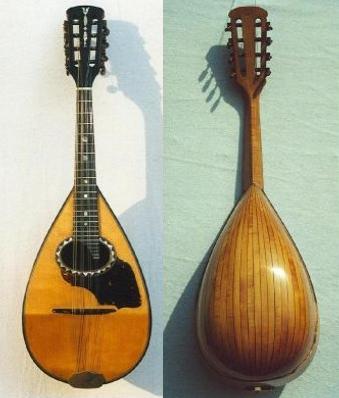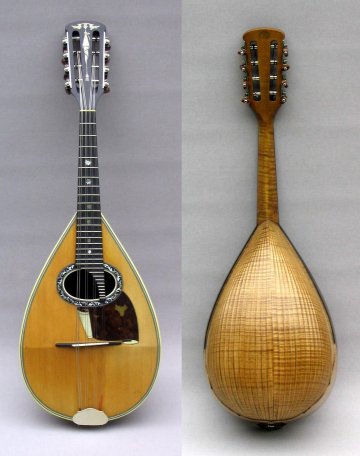| Home Italian Mandolin Makers Italian Makers | |||
| Luigi Embergher
(1856-1943)
Born in Arpino in Northern Italy, into a woodworking family, Luigi Embergher took over the family instrument atelier about 1880, and by 1890 had premises in Rome... 'Via dei Greci No. 21'. He probably learned the craft of mandolin instrument-making in the early 1880s in the atelier of Giovanni De Santis. After 1900, he was to refine the modern Roman mandolin design, with the addition of a zero-fret, the extension of the fingerboard under the 2nd string up to the g''', and a much more pronounced 'V'-shaped neck. These refinements, together with important alterations inside the sound chamber, regarding the construction and strutting of the soundboard, quickly brought his instruments great fame. Embergher introduced important innovations inside the sound box to improve the quality of sound. Together with a careful 'teardrop' design of the sound box, the improvement of the volume was obtained through positioning bars in a diagonal manner onto the sound table. A design created to render as many sound waves as possible on the lower part of the sound table. The strongly build sound box was veneered with wood to keep the ribs of the belly together. Something very much in contrast with the work by Embergher's Neapolitan contemporaries: the master luthiers Nicola (1859-1924) and Raffaele Calace (1863-1934) who reinforced the belly of their instruments with paper and/or strips of fabric. To preserve the clear and full sound which is known of the late 19th century Neapolitan mandolins made by Pasquale Vinaccia, Embergher kept his sound tables very thin, only strengthening them by gluing sound bars in a special lute-like way on to the sound table. By using top class wood and other high quality materials like for instance ivory, bone and a silver-nickel alloy (German silver) Embergher developed mandolins with a strong, sonorous warm sound and a perfect intonation that was much appreciated by many great mandolinists of his time. He built a range of instrument for the whole mandolin orchestra from mandolin to bass. His instruments continued to be built both before and after his death by Domenico Cerrone. The Italians have broadly two schools of construction. The
Roman mandolin is exemplified by the instruments of Luigi
Embergher. These typically have radiused fretboards, thin but deep,
often triangular necks, and are frequently lined with spruce shavings instead of the
paper linings of the Neapolitan school of makers. More information is available on the Embergher site... see links page. |
|||
 |
 |
missing | |
| Student Type A/1 | Student Type B/2 | Student Type c/3 | |
 |
 |
 |
 |
| Orchestra No 1 | Orchestra No 2 | Orchestra No 3 | Orchestra No 4 |
 |
 |
 |
 |
| Soloist No 5 1904 | Soloist No 6 1972 | Luigi Embergher | Domenico Cerrone |

Embergher label |

Embergher tailpiece |

Embergher tail cover and locking key (repro) |
|